


厂商详情
MARUI SEITOU Inc.
| 地址 | 710 Shigarakicho nagano Kokashi Shiga, 日本邮编:529-1851 |
|---|---|
| 负责人姓名 | TAKANORI MURAKI |
| 年收 | 不显示 |
| 公司人数 | 19 |


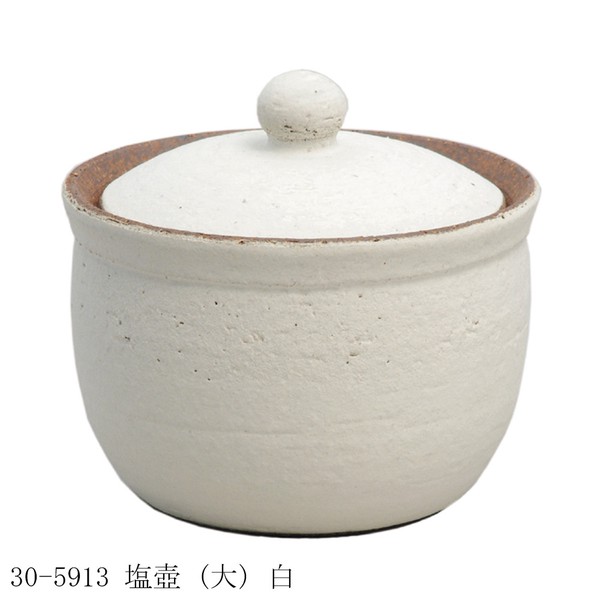

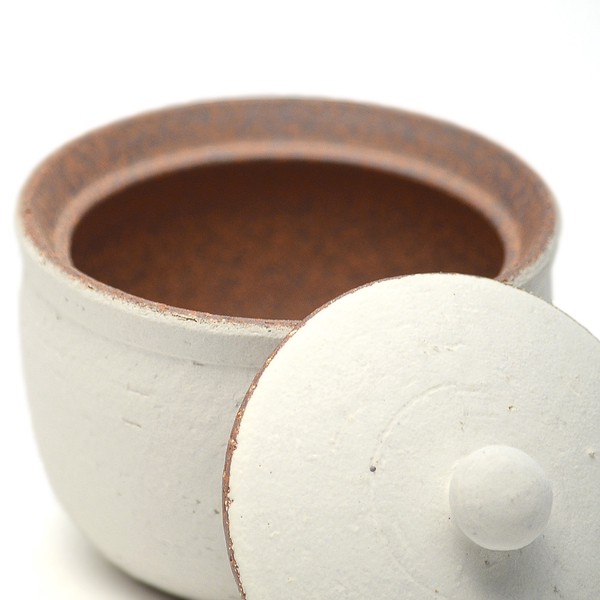
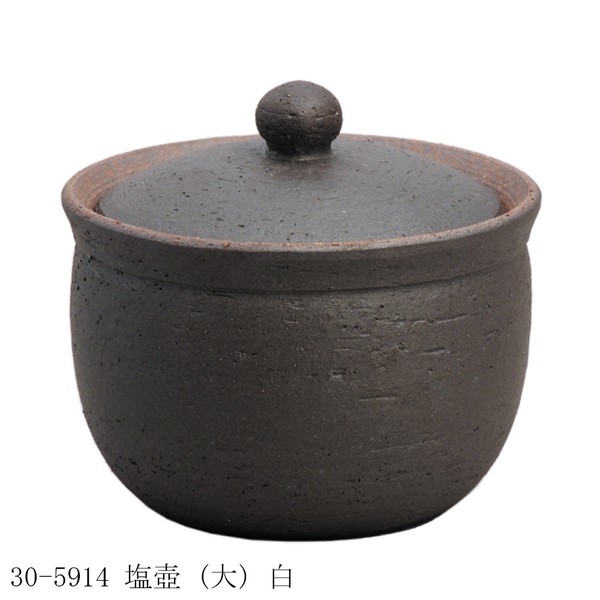


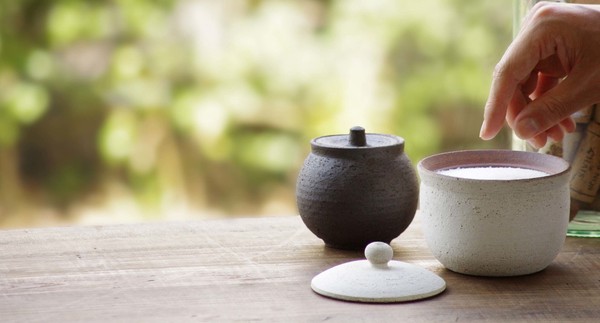
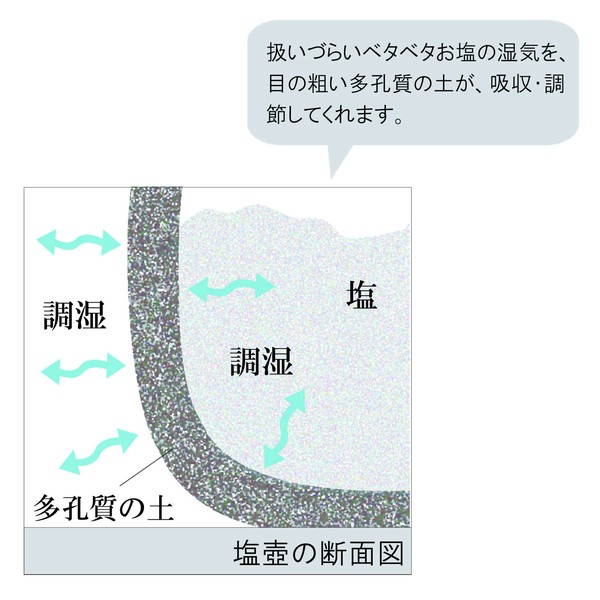
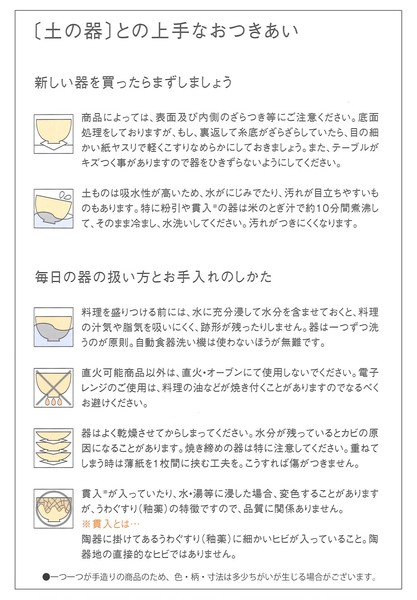


此类产品中的其他产品
信乐烧 调味料/调料容器 黑色 日本制造
SD商品编号:5280776
| 详情 | 价格 & 数量 | ||
|---|---|---|---|
| S1 |
盐罐(大)白色
塩壺 (大) 白
(3-4622)
JAN:4965440359131
|
(3-4622)
JAN:4965440359131
批发价: 仅限会员
1点/组
有库存
|
|
| S2 |
黑色盐罐(大)。
塩壺 (大) 黒
(3-4623)
JAN:4965440359148
|
(3-4623)
JAN:4965440359148
批发价: 仅限会员
1点/组
有库存
|
|
| 尺寸 |
|---|
|
约9.5厘米(宽)x 9.5厘米(深)x 9厘米(高) 容量:约270毫升(黑色和白色的尺寸相同)。
|
| 商品规格 |
|---|
描述
| 总是要加一小撮 [好盐]。 [萨拉萨拉盐罐] 烹饪时,如果盐粘或硬,就很难调整调味料。 在炒菜时,味道会浓缩...或者,如果您有高血压,想减少食物中的盐分,结果可能会太咸...... 盐应该尽可能方便使用。 但是,如果把盐放在密闭的容器里,盐就会受潮,不知不觉就会变硬、变粘。 在这个盐罐里,盐始终与外界空气呼吸,因此干盐保持干燥,海盐类的湿盐保持湿润。 盐可以保持其原始[恰到好处]的状态。 因此,您总能吃到一撮适量的盐。 ; 自古以来,陶器,尤其是陶罐,因其材料的适用性,一直是储存和保存谷物、茶叶等的非常有用的容器。这款盐罐以古老的生活智慧为基础,重新打造出适合当今生活方式的 "恰到好处 "的厨房产品。 [造型简洁利落,盖子轻巧易握。]设计和表面处理与功能性相一致... 这是一款由能工巧匠精心手工打造的产品。 ; ; ≪工作原理 *这种盐罐是用信乐特有的多孔粘土烧制而成,质地粗糙,盐罐本身可以吸收附着在盐上的水分。它还能保持罐内湿度恒定,使盐保持可用状态。 *为了吸收盐的水分,盐罐没有像传统陶器那样上玻璃釉。 内部完全不上釉,这样更容易吸收水分,盐也更难附着在上面。 盐罐外面刮去一层薄薄的釉(装饰泥),其成分与陶瓷泥相似。这是一种通过增加表面积和将盐的水分分散到整个壶内(毛细现象)来促进湿度控制的装置。 ; ; ; ; Hechimon 是什么?[Hechimon "是信乐工匠的用语,意为 "风吹过的东西"。 就像大自然创造的各种形状和我们每个人的个性一样、 就像大自然创造的各种形状和我们每个人的个性一样,这些器皿也有各种各样的表现形式。 与其说它们是工业产品,不如说它们是农产品。 [这些器皿由技艺精湛的工匠制作,他们深知 "异质 "的重要性,充满了童趣和诚意。 Hechimon 由 Marui-Made 制造。 Hechimon 是丸井制作所株式会社的注册商标。 什么是Shigaraki 器皿? 什么是滋贺烧? 滋贺县甲贺市滋贺烧町生产滋贺烧陶瓷器。它被列为日本最古老的六大窑之一,据说已有 1260 年的悠久历史。 1976 年(昭和 51 年),它被国家政府指定为传统工艺。 (产品管理编号 01) (日本制造) |
更多
| 配送方法 | 估计到达 |
|---|---|
| Sea Mail | 从 05月05日 到 07月07日 |
| Air Mail | 从 04月17日 到 04月21日 |
| EMS | 从 04月16日 到 04月21日 |
| Pantos Express | 从 04月18日 到 04月23日 |
| DHL | 从 04月16日 到 04月18日 |
| UPS | 从 04月16日 到 04月18日 |
| FedEx | 从 04月16日 到 04月18日 |
|
某些交易条件可能仅适用于日本
根据您的显示器,颜色可能与实物略有不同。由于每件商品均为手工制作,因此在尺寸*颜色图案等方面可能会略有不同。
使用方法:可用于家庭和专业餐具,特别注重细节。 注意事项 [使用注意事项] *请勿将盐罐用于储存液体或潮湿食物,因为它使用了陶瓷的湿度控制功能。 *清洗盐罐时,建议使用小苏打或沸水。使用洗涤剂时,请注意不要转移香味。 *请勿将盐罐长时间浸泡,以防发霉和留下污渍。使用前请充分晾干。 *请注意,在潮湿的地方使用时,盐可能会凝固。为防止盐变硬,请不时摇晃。 *在水中或热水中浸泡时,壶可能会出现湿润和变色,但这是釉的特性,不会影响壶的质量。 *罐子表面或底部可能会出现盐晶体和矿物质,但这不是问题,因为盐成分会随着多孔陶瓷的湿度调节一起流出。这证明盐罐在正常工作。如果您对此特别在意,请用布擦拭干净。另外,请使用地毯。 *表面的黑点和白点是铁和硅石等成分,是保持陶土的粗糙度和多孔性所必需的,并不是质量问题。 ; ; 请注意,我们的库存可能比标示的要多。 请随时通过电子邮件或电话与我们联系。 电子邮件:http://www.superdelivery.com/msgbox/nm?s=1&stc=204729 电话:0748-82-0855 |
[萨拉萨拉盐罐]
烹饪时,如果盐粘或硬,就很难调整调味料。
在炒菜时,味道会浓缩...或者,如果您有高血压,想减少食物中的盐分,结果可能会太咸......
盐应该尽可能方便使用。
但是,如果把盐放在密闭的容器里,盐就会受潮,不知不觉就会变硬、变粘。
在这个盐罐里,盐始终与外界空气呼吸,因此干盐保持干燥,海盐类的湿盐保持湿润。
盐可以保持其原始[恰到好处]的状态。
因此,您总能吃到一撮适量的盐。
;
自古以来,陶器,尤其是陶罐,因其材料的适用性,一直是储存和保存谷物、茶叶等的非常有用的容器。这款盐罐以古老的生活智慧为基础,重新打造出适合当今生活方式的 "恰到好处 "的厨房产品。
[造型简洁利落,盖子轻巧易握。]设计和表面处理与功能性相一致...
这是一款由能工巧匠精心手工打造的产品。
;
;
≪工作原理
*这种盐罐是用信乐特有的多孔粘土烧制而成,质地粗糙,盐罐本身可以吸收附着在盐上的水分。它还能保持罐内湿度恒定,使盐保持可用状态。
*为了吸收盐的水分,盐罐没有像传统陶器那样上玻璃釉。
内部完全不上釉,这样更容易吸收水分,盐也更难附着在上面。
盐罐外面刮去一层薄薄的釉(装饰泥),其成分与陶瓷泥相似。这是一种通过增加表面积和将盐的水分分散到整个壶内(毛细现象)来促进湿度控制的装置。
;
;
;
;
Hechimon 是什么?[Hechimon "是信乐工匠的用语,意为 "风吹过的东西"。
就像大自然创造的各种形状和我们每个人的个性一样、
就像大自然创造的各种形状和我们每个人的个性一样,这些器皿也有各种各样的表现形式。
与其说它们是工业产品,不如说它们是农产品。
[这些器皿由技艺精湛的工匠制作,他们深知 "异质 "的重要性,充满了童趣和诚意。
Hechimon 由 Marui-Made 制造。
Hechimon 是丸井制作所株式会社的注册商标。
什么是Shigaraki 器皿?
什么是滋贺烧?
滋贺县甲贺市滋贺烧町生产滋贺烧陶瓷器。它被列为日本最古老的六大窑之一,据说已有 1260 年的悠久历史。
1976 年(昭和 51 年),它被国家政府指定为传统工艺。
(产品管理编号 01)
(日本制造)
[Sarasara Salt Jar]
When cooking, it is difficult to adjust the seasoning if the salt is sticky or hard.
In stir-frying, the flavor can be concentrated... Or, if you have high blood pressure and are trying to reduce the amount of salt in your food, it may end up being too salty...
Salt should be as easy to use as possible.
However, if it is in an airtight container, it can get stuck in humidity and become hardened and sticky before you know it.
In this salt jar, the salt always breathes with the outside air, so the dry salt stays dry and the sea salt type moist salt stays moist.
The salt is kept in its original [just right] condition.
Therefore, you can always have a pinch of the right amount of salt.
Since ancient times, pottery, especially earthenware jars, have been very useful as containers for storing and preserving grains, tea leaves, etc., due to the suitability of their materials. This salt jar is based on the wisdom of the old ways of life, and has been reborn as a "just right" kitchen product for today's lifestyle.
[Simple and neat shape. Light and easy-to-grip lid]. The design and finish are in line with functionality...
This is a product made by the careful handwork of skilled craftsmen.
≪how it works...
*This salt jar is fired with the porous clay unique to Shigaraki, which has a coarse texture, and the vessel itself absorbs water that has somehow become attached to the salt. It also keeps the humidity inside the vessel constant and keeps the salt in a usable condition.
*To absorb the moisture of the salt, the salt jar is not glazed with a glassy glaze like conventional pottery.
The inside is not glazed at all, which makes it easier to absorb moisture and harder for salt to adhere to it.
The outside is scraped, and a thin layer of glaze (decorative clay) similar in composition to ceramic clay is applied. This is a device to promote humidity control by increasing the surface area and spreading the moisture of the salt throughout the entire pot (capillary phenomenon).
What is hechimon... [Hechimon" is a Shigaraki craftsman's word meaning "windswept things".
Just like the various shapes created by nature and the individuality of each of us,
The vessels have a variety of expressions, just like the various shapes created by nature and the individual personalities of each of us.
They are more like farm products than industrial products.
[These vessels are made by skilled craftsmen who know the importance of "heterogeneity" and are filled with playfulness and sincerity.
The Hechimon is made by Marui-Made.
Hechimon is a registered trademark of Marui-Seito Co.
What is Shigaraki ware?
What is Shigaraki ware?
Shigaraki pottery is made in Shigaraki Town, Koka City, Shiga Prefecture. It is counted as one of the six oldest kilns in Japan and is said to have a long history of 1260 years.
It was designated as a traditional craft by the national government in 1976 (Showa 51).
(Product control number 01)
(Made in Japan)